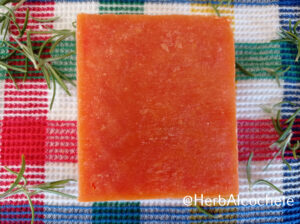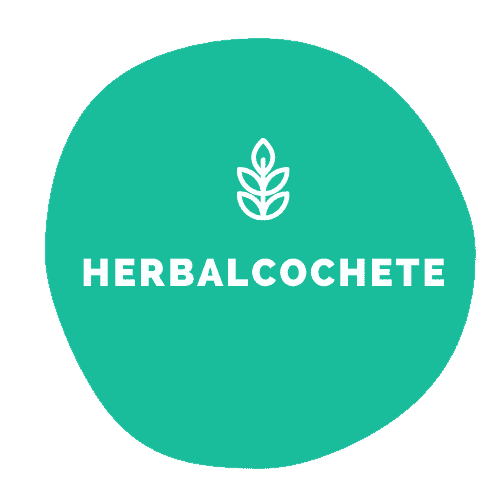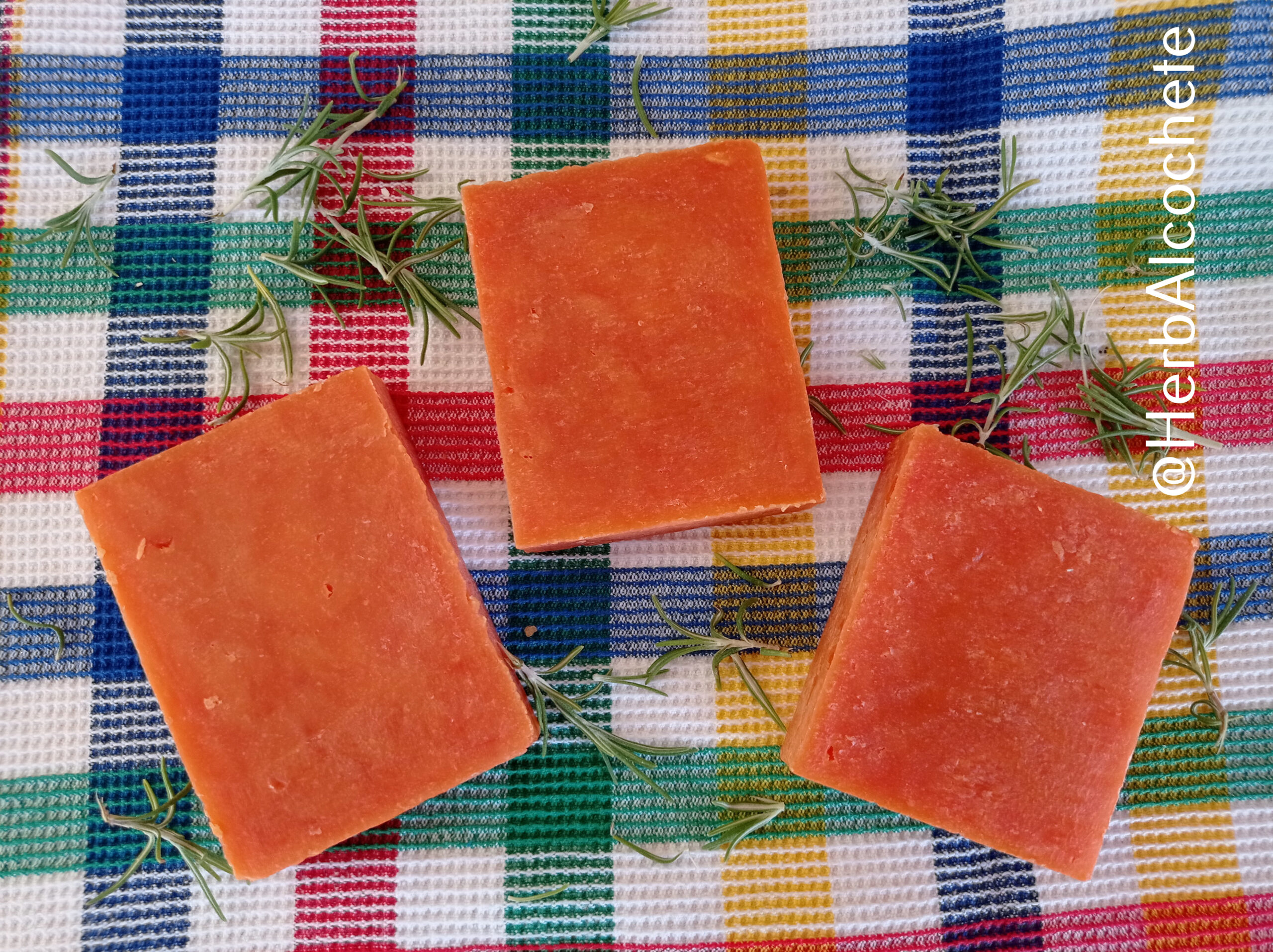I must be honest, this is my first attempt at hot process soap. I have been shying away from making it, as it looked pretty complicated from the recipes I’ve read beforehand. It turns out it’s pretty simple. Probably there’s some nuances to the process that will make the soap making better.
Try this paprika hot process soap recipe, a hot process soap with paprika as a natural colorant. This time, paprika is used in infused oils with great results. The soap is scented with a sweet orange fragrance, with no more addictives. The end result is a pretty, simple soap, foamy and very fragrant.
You can make soap by hot process with SIMPLE steps. If you’re familiar with cold process, you will only add the cooking step to it, between reaching trace and adding after trace ingredients. You will need a slow cooker though, I would not venture making hot process soap in the stove.
Can Paprika Be Used In Soap Making?
Paprika can be used in both hot process and cold process as a natural colorant. It can be used, like all other natural colorants, in the lye water, added during/after trace or as an infused oil. Have in mind that, if you add it as a powder after trace, the spice itself will make your soap a bit “scratchy”.
I like soap with a bit of exfoliant and paprika is in the right point: it’s a mild, not too aggressive or scrubby exfoliant. In cold process, I’ve used paprika during/after trace, but in this recipe I’ve added it infused in the liquid oils of the recipe. Below, you can see pictures from my cold process soaps with paprika added during trace.
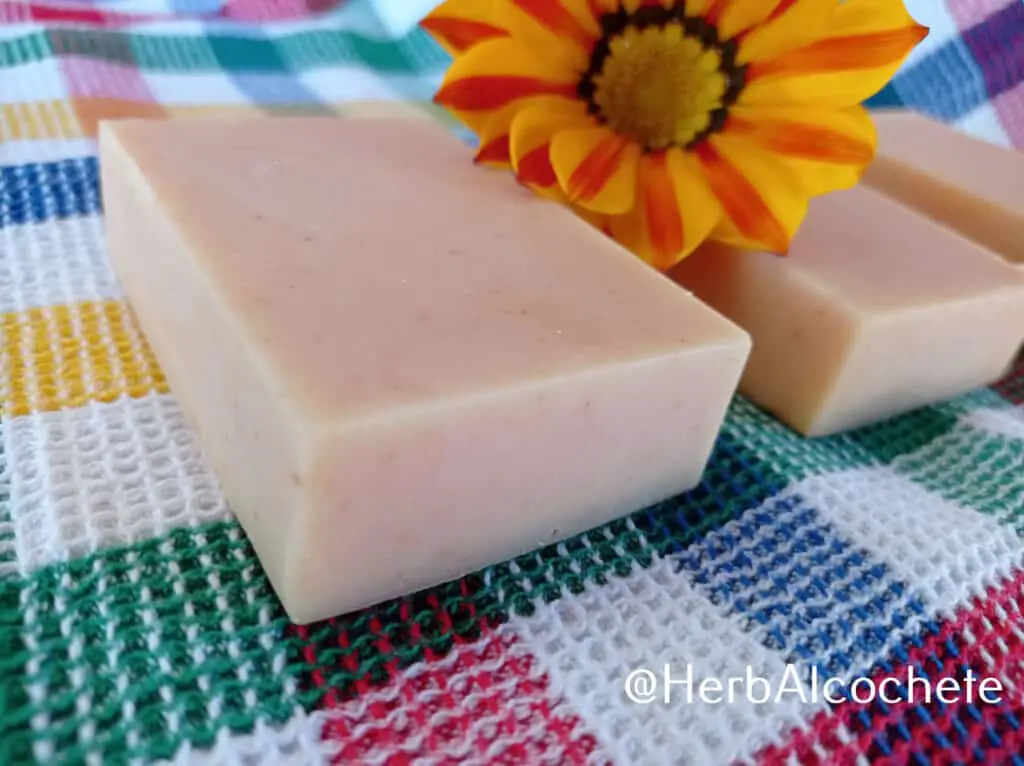
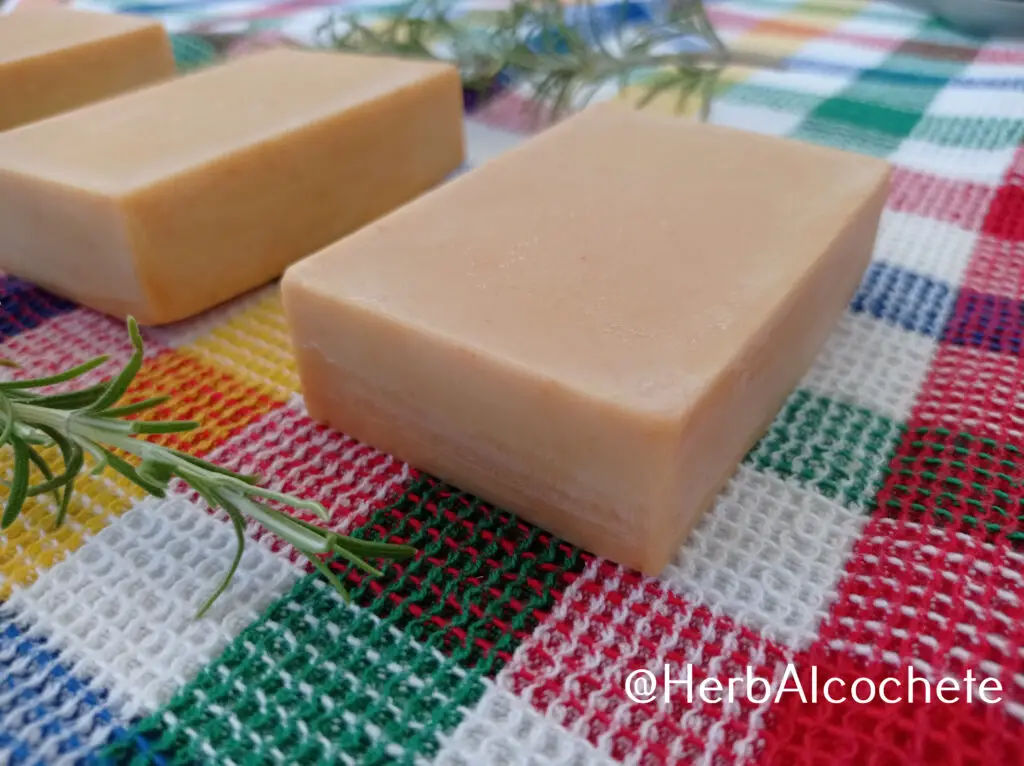
In this recipe, I’ve infused all the liquid oils in paprika. The result is a very strong and vibrant orange color that puts to shame many artificial colorants, something not common in natural colorants. I’ve seen recipes on the net, and it works as well in cold process.
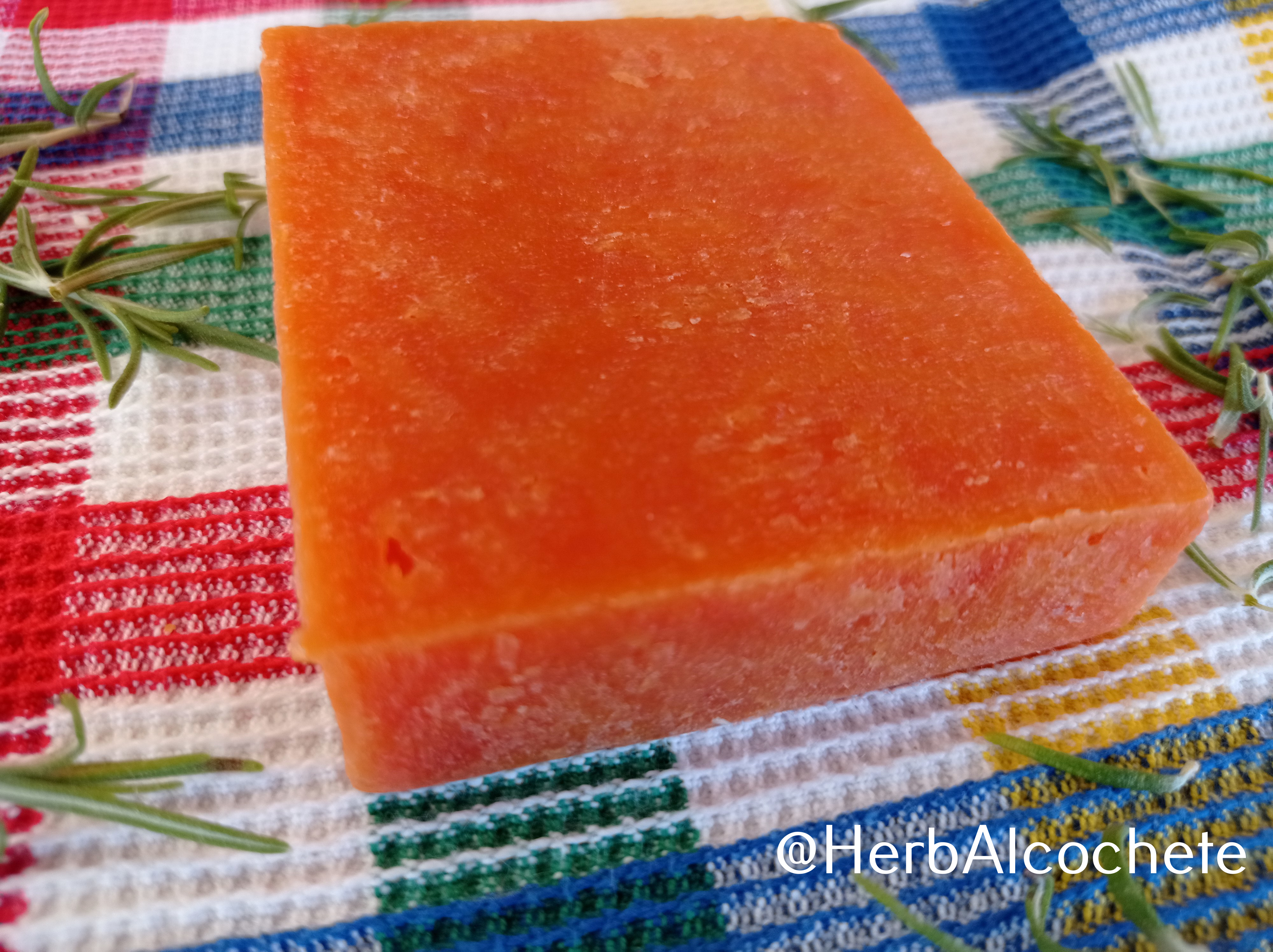
I have not yet tried to use paprika in lye water, but I doubt
How Much Paprika Do You Put In Soap?
In this recipe, I’ve infused 300g of liquid oils in 35g of paprika. That will make 12% of oil weight in paprika, meaning if you infuse 450g (1lb), you need to use approx. 55g or 2oz. But you don’t need to be very straight with the quantity. One more gram or one less gram will make little difference.
In cold process, you can see in the pictures above, I’ve used 1 teaspoon per 450g (1 lb) of oils in one recipe, and 2 teaspoons per 450g (1 lb) of oils on the other. The result is a yellow color, like “burned” yellow when you use more paprika. It’s pretty and natural, but a big difference from the vibrant orange when you infuse the oils.
Hot Process
I do have 2 years of experience now with cold process soap. I don’t know all – so far from it – but I have some experience with soap paste for liquid soap, tracing, and some common soap issues. So, I’ve finally felt that it was time and emerged myself into the hot process soap experience.
I’ve followed the process steps from this recipe from Lovely Greens, but using my own recipe. This soap was made with 45 minutes of cooking, and so far it seems quite good. I will let it cure and see how to goes along time. If this turns out to be good, I must tell you, hot process is really simple. Not something to begin with, but simple for soap makers with experience.
I have tried to wash my hands with one bar already and the result is… it works as a soap 😀 It foams well and smells like orange. It also has a scent of its own, probably coming from the mixture of infused oils. It’s pleasant, like cookie dough before cooking or something similar.
Some sources say that it takes “several hours” to cook the soap to be neutral (7 pH). Most information in the SoapMakingForum about hot process points to a cooking time (with the slow cooker in high temperature) for 40-45 minutes.
And handmade soap can’t really get neutral. Check out for example this post about lowering pH in soap. It’s good enough if you get 9 in pH. I am going with that information, as it makes sense to me: soap is alcaline by nature, if you try to change it, you won’t get soap but something else you might not want to use to clean yourself. When I hear about trying to get sop to b neutral/lower pH, I start to doubt about that source.
Paprika Hot Process Soap Recipe
As my first attempt at hot process, and unlike what I usually do – be sparse with oils – I’ve used a rich mixture of oils. Nothing less than 6 oils, including shea butter. With time, I will see how the resulting soap performs with this complete mixture of oils – and if it’s worth it.
As this soap uses high temperature in its making, and ricing or siezing is impossible, unless you turn the heat off before time, I’ve used a fragrance oil with no fear of getting my soap wrong.
Of course, it would have to be an orange fragrance 🙂 Not only it’s a scent I am unable to use in cold process, it makes total sense for a soap with this color. There is an essential oil, Orange Ten Fold Essential Oil, a concentrated sweet orange essential oil, that you can use in cold process and it’s said to work. But I don’t have it available locally, so I’ve decided to simply use another soap making process and the fragrance oil.
Hot Process Soap Addictives
I didn’t use any other addictives as I wanted to see a “pure” hot process soap performing. I’ve read that adding yogurt at the end of the soap will make it milder and foamier. Something to try on another recipe.
I will probably give it a try at other ingredients, such as milk, rice water or herbal-infused waters. Since they won’t suffer the saponification process, I believe hot process soap will benefit from the medicinal plant properties more effectively than cold process soap. Adding shea butter as a superfat, instead of making it part of the oils mixture, might also enrich the soap.
I am yet to find out why recipes don’t use anti-oxidant in hot process, as I don’t see any reason not to. Sodium lactate is also a common addictive in hot process soap, said to make the soap batter more fluid to work with. For now, I will only use 25% of lye concentration and see if I have issues with soap batter fluidity.
In the end, this resulted in a beautiful soap with a vibrant color and a wonderful scent. The soap itself is as good as any other handmande soap: mild, foamy and somehow conditioning.
Give it a try at this hot process soap recipe – provided you have made cold process soap. If you are a begginer, start with cold process and these beginner’s recipes.
Related Posts
- Oil Properties for Soap Making
- Are Essential Oils Safe For Soap?
- Best Essential Oils for Soap Making
- How To Color Soap With Kitchen Ingredients
- Soap Recipes For Beginners
Equipment
Ingredients
Lye Water
- 211 g distilled water
- 65 g lye (100% sodium hydroxide)
Oils/Fat
- 150 g extra virgin olive oil
- 150 g refined or organic coconut oil
- 50 g sunflower oil
- 50 g sweet almond oil
- 50 g castor oil
- 50 g refined or organic shea butter
- 35 g paprika
After Trace Ingredients
- 16 ml orange fragrance oil
Instructions
Get Ready!
- Wear goggles and gloves! Look at “Safety Precautions” in the video above or in Soap Making Safety Precautions
- Watch the video above about "Hot Process Soap Making Tutorial" or read the post for instructions on hot process soap making before starting. These are generic but important steps for all recipes.
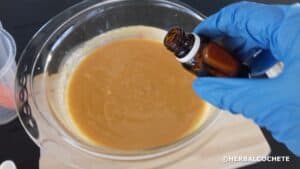
- Prepare the paprika infused oils in advance: use the paprika quantity with around 300g or 10 oz of liquid oils. Infused them in heat for some hours or at room temperature for some weeks. Learn how to make infused oils in How To Make Infused Oil With Dried Herbs.
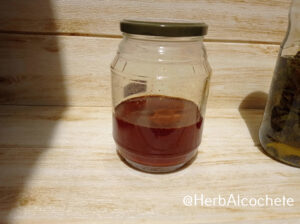
- Your oils should get an orange color. Strain the oils from the paprika powder before using them in the soap. The soap color will be given by these infused oils.Measure precisely 255 g or 8.99 oz of these oils for the recipe (from 300g some will be absorbed by paprika). If you are missing some oil (no more than 5g or 0.17 oz[/adjustable) you can add olive oil to make 255 g/8.99 oz.
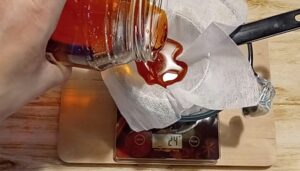
- Assemble everything: ingredients, equipment, safety equipment. Prepare your workstations. Measure all the ingredients. Don’t start the recipe without having everything ready!
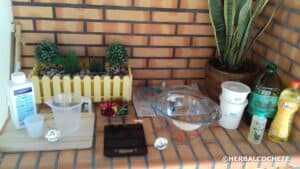
Heat the Oils
- Heat all your oils in the slow cooker until the solid oils melt. Use MEDIUM or HIGH heat.50 g sweet almond oil
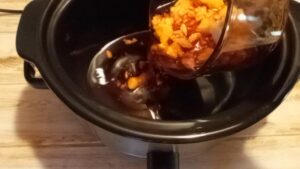
Make the Lye Water
- Make the lye solution according to How To Make Lye Water. Mix it well until the vapors start to dissipate.211 g distilled water, 65 g lye (100% sodium hydroxide)
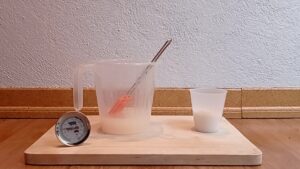
Make the Soap Batter
- You don't need to worry very much about temperatures. Just make sure the oils are fully melted. Still, I've made sure that the oils and lye water didn't have a difference of more than 10ºC/ºF between them, just as a precaution.
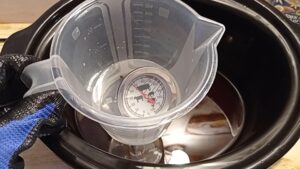
- Pour the lye water into the oils carefully, using a spatula or the stick blender shaft.
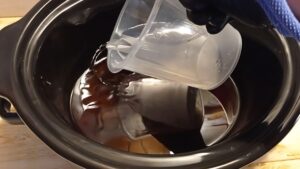
Reaching trace
- Set the slow cooker to HIGH.
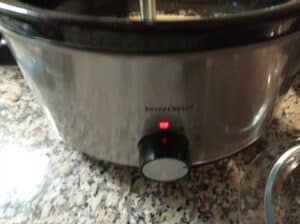
- Mix oils and lye with the immersion blender. Use short pulses alternated with manual mixing (like a spoon). See how the soap is getting a beautiful orange color just from the infused oils.
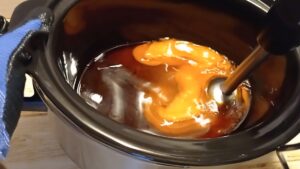
- Reach medium trace with the immersion blender. The soap will look like pudding and although remaining fluid, it will leave marks on its surface. This is exactly like in cold process.
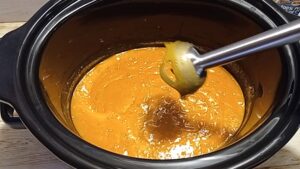
Cook The Soap Batter
- Turn the heat to LOW. With a spatula, make sure you scrape the soap residue from the walls of the slow cooker, and mix the soap batter a bit. Otherwise you will have crusted soap bits in your soap bars.
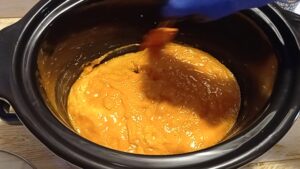
- Cover the slow cooker and let the soap batter cook for 30 mins. It's important to not take the lid off for this time, or it will release moisture. The soap needs all the water to remain fluid enough.
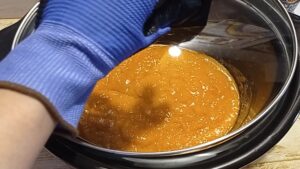
- The soap will look like it's going to separate. You will see what it looks like oils floating around. Don't worry, this is normal. Don't do anything.
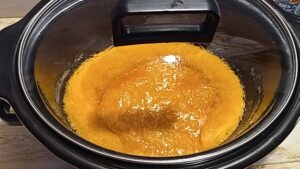
- After some minutes, the soap will start to puff up in the edges. With time it will also change its texture, looking more vaseline-like: translucid and a little bit darker.
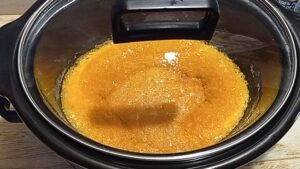
- After 30 minutes, check if the center of the soap is opaque or more vaseline-like. This is going to be hard to see in this soap, as it's orange and will look very uniform.
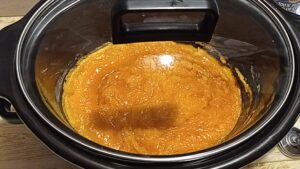
- What did I do? I've waited for more 15 minutes, then I've opened the lid and mixed well with a spatula. I could see that the soap batter had a sort of translucid texture. That's the vaseline look you need for your soap.
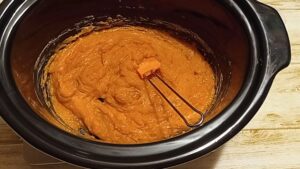
Add After Trace Ingredients
- Add the fragrance oil. Mix well with a spoon or spatula. Do not turn the heat off or your soap will start to harden immediately. Just check if the temperature16 ml orange fragrance oil
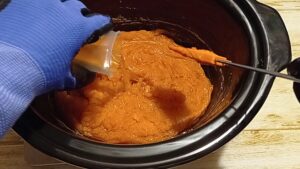
Molding and Curing
- Pour the soap batter into the large soap mold. Most likely you will spoon it to the soap mold as the crock pot pan is really heavy, and it's not handy to pour the soap. Shake and beat the soap mold to release any air bubbles.
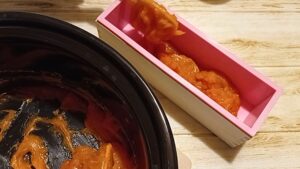
- Let the soap set and harden for 24 hours.

- Learn how to clean all equipment with How to Clean Soap Making Equipment.
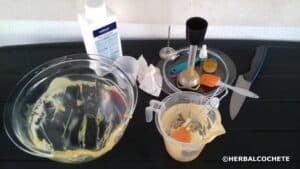
Cutting and Curing the Soap Bars
- After 24 hours, unmold the bulk soap bar from the large mold and cut the soap into small bars. See How To Cure Soap: Unmold, Cut And Cure Bars.
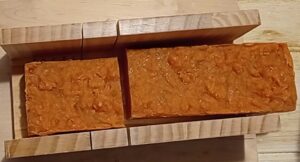
- Let the bars cure for 2 to 4 weeks in a ventilated place. They need to dry completely its water content. See How To Cure Soap: Unmold, Cut And Cure Bars. and also How Do You Store Homemade Soap?
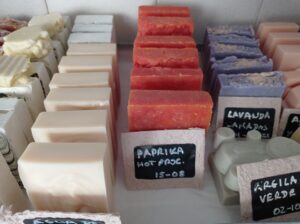
- Enjoy your soaps!!
